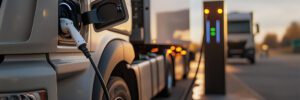Tesla has recently opened some of its Supercharger stations to non-Tesla EV drivers in the US, and EV boosters and influencers have been testing out the system and sharing their experiences. While the process of charging a non-Tesla EV at a Supercharger initially starts off smoothly, it can quickly become complicated due to the variety of charging ports on different EVs. For example, the cable may not reach unless the EV is parked across more than one space. Additionally, Tesla’s requirement that drivers use its branded app could run afoul of state and federal regulations that mandate open access.
To address these issues, Tesla is working on making the cables longer and is exploring ways to comply with state and federal regulations. For example, the Bipartisan Infrastructure Law mandates that drivers must not be required to use multiple apps and accounts to charge, and Tesla currently requires outsiders to pay $12.99 per month for a Supercharging membership.
Overall, Tesla’s decision to open up its Superchargers to non-Tesla EVs is a positive step forward for the EV industry. However, there are still some kinks that need to be worked out in order for the system to be truly accessible and compliant with regulations.
FAQ
Q1: Are electric car batteries recyclable?
A1: Yes, electric car batteries are recyclable.
Q2: Are electric car chargers free?
A2: It depends on the charger and the location. Some electric car chargers are free, while others may require a fee.
Q3: Can electric car batteries be rebuilt?
A3: Yes, electric car batteries can be rebuilt with the right tools and knowledge.









